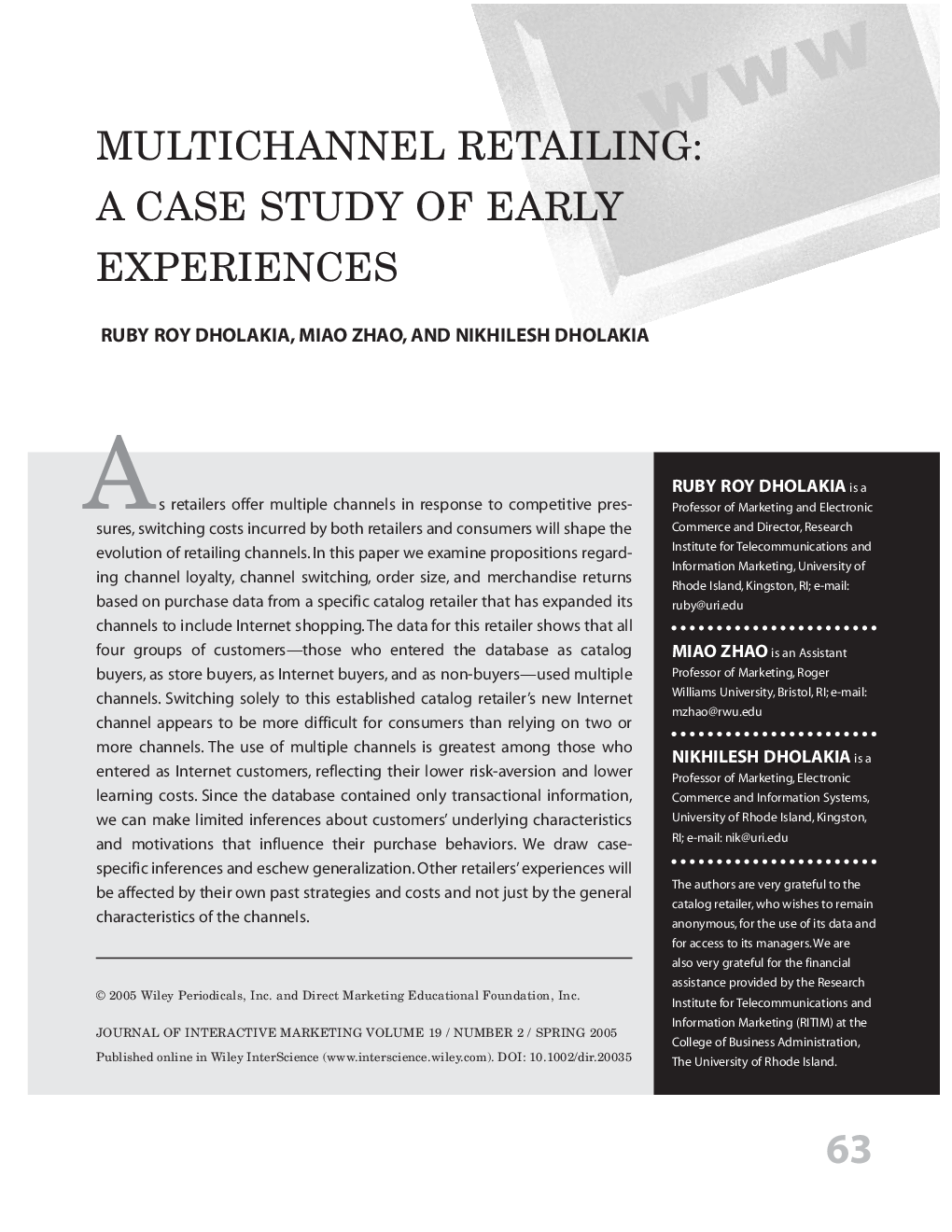| Article ID | Journal | Published Year | Pages | File Type |
|---|---|---|---|---|
| 10438858 | Journal of Interactive Marketing | 2005 | 12 Pages |
Abstract
As retailers offer multiple channels in response to competitive pressures, switching costs incurred by both retailers and consumers will shape the evolution of retailing channels. In this paper we examine propositions regarding channel loyalty, channel switching, order size, and merchandise returns based on purchase data from a specific catalog retailer that has expanded its channels to include Internet shopping. The data for this retailer shows that all four groups of customers-those who entered the database as catalog buyers, as store buyers, as Internet buyers, and as non-buyers-used multiple channels. Switching solely to this established catalog retailer's new Internet channel appears to be more difficult for consumers than relying on two or more channels. The use of multiple channels is greatest among those who entered as Internet customers, reflecting their lower risk-aversion and lower learning costs. Since the database contained only transactional information, we can make limited inferences about customers' underlying characteristics and motivations that influence their purchase behaviors. We draw case-specific inferences and eschew generalization. Other retailers' experiences will be affected by their own past strategies and costs and not just by the general characteristics of the channels.
Related Topics
Social Sciences and Humanities
Business, Management and Accounting
Marketing
Authors
Ruby Roy Dholakia, Miao Zhao, Nikhilesh Dholakia,
